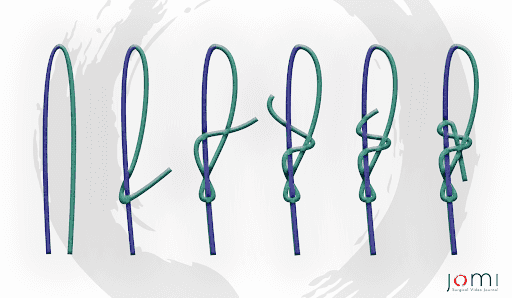1151 views
Tying Arthroscopic Knot for Glenoid Suture Anchor
Table of Contents
Roeder Knot-Tying Technique
- Each suture anchor is fixed using a Roeder knot with excellent tension re-approximating a large bumper placed at the 5-o’clock position.
- The post limb is always designated as the limb in the capsule and the non-post is on the glenoid. The post limb is shortened to approximately six inches.
- A Webster needle driver is clamped to the post limb.
- The non-post limb is looped under the post limb and then looped back under the non-post limb.
- The non-post limb is again looped under both the post and non-post limbs.
- Finally, the non-post limb is looped back under only the post limb and then placed down through the created triangle between the two limbs.
- As the knot is tightened locking areas are created both close to the labrum and then further away from the labrum. This allows the knot to become tighter as it is pushed down to the labrum.
- The non-post limb is then left alone, and the knot is first cinched down with a knot pusher passed the labrum to optimize the biomechanics of the knot.
- The knot can be rocked back and forth to remove the slack out of the sliding knot system.
- The knot is further secured with three half hitches with alternating posts.
- The suture is then cut with a cutter device, leaving a few millimeters of suture tail.
- Knots are repeated for each remaining suture anchor.

Figure 2. Arthroscopic Roeder Knot-Tying Technique. The post limb is depicted in blue, and the non-post limb is depicted in green. The non-post limb should be longer than the post limb; however, it is not depicted that way for better visualization of the knot.

